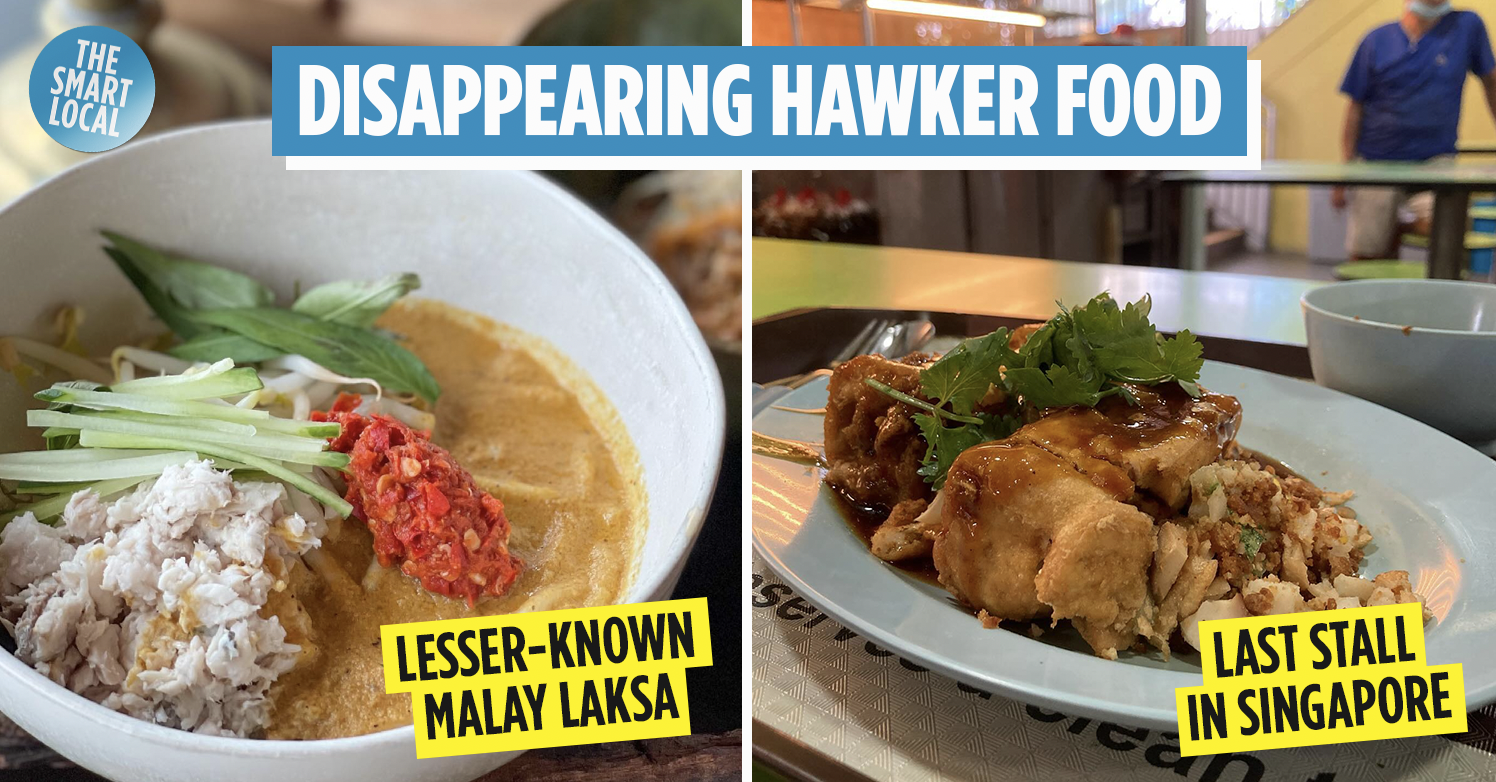Nostalgic hawker food in Singapore
Chicken rice, chilli crab, satay, bak kut teh – these are all must-trys you’d find on any list about hawker food in Singapore. But Singapore’s list of local food runs long and includes many hidden gems that don’t make many top 10s and tourist brochures. So we’ve rounded up a list of hawker food we feel should be in the spotlight more often. Once popular back when our parents were kids, these dishes are now slowly disappearing. Here’s where to get nostalgic hawker food in Singapore and where to find them:
Table of Contents
1. Laksa Siglap
When it comes to laksa, you likely already know Nyonya laksa and Katong laksa, the most common forms of the curried noodle dish in Singapore. But, there’s one regional laksa you probably haven’t heard of yet – laksa Siglap.
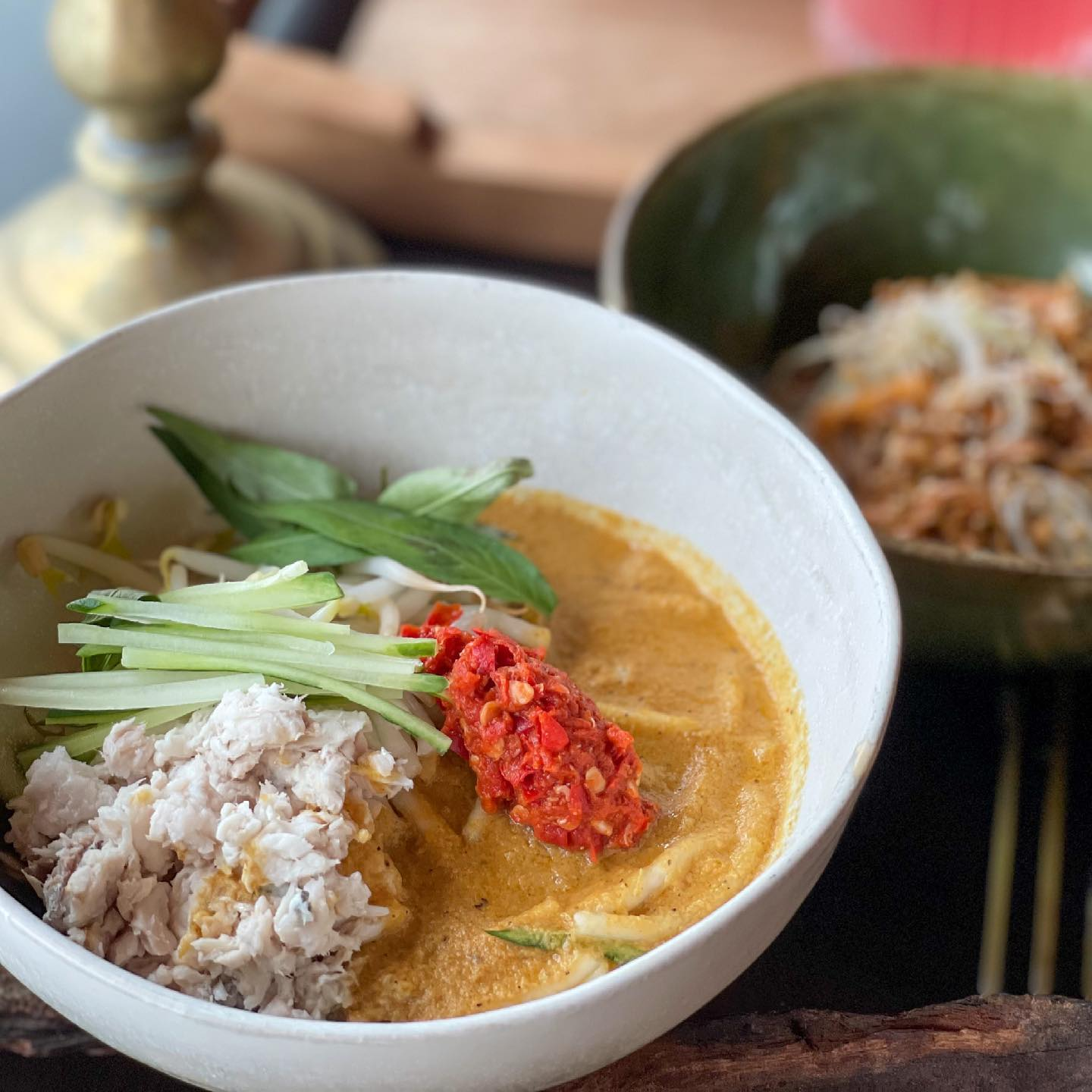
Image credit: Dewakan via Facebook
It’s a homegrown street hawker dish that originated from the kampungs at Siglap. Many fishermen used to live here, so much of the food they ate featured fresh fish caught in the waters surrounding Singapore. That’s why you’ll find laksa Siglap laced with chunks of ikan parang (wolf herring), instead of shrimp, as you’d find in Nyonya or Katong laksa.
The aromatic gravy is also made with tamarind, toasted grated coconut paste, ginger, and lemongrass, which is traditionally ladled over thick tapioca noodles called laksa cap but these can be hard to find in markets these days. Toppings include sliced cucumber, bean sprouts, and laksa leaves.
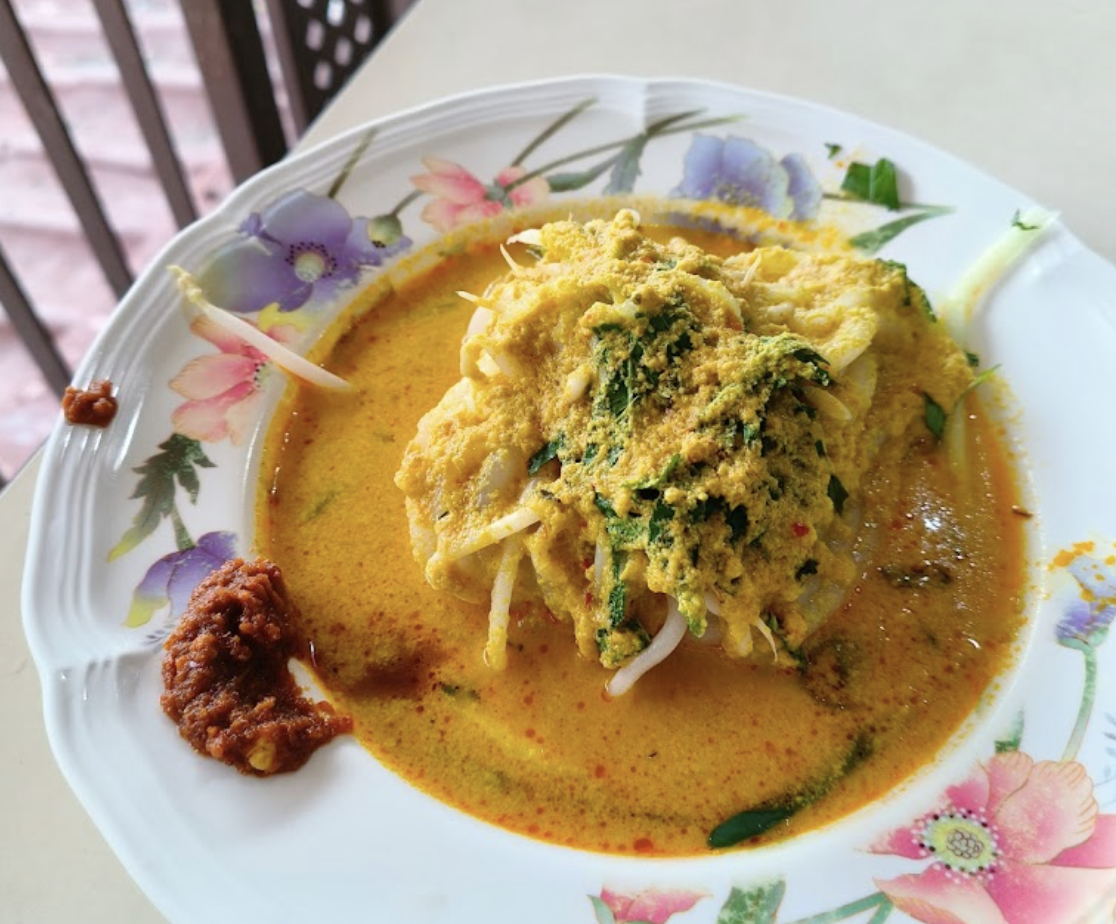
Image credit: T greensake via Google Maps
Laksa Siglap isn’t as commonly found as other laksas around Singapore, but you can still get a bowl of this almost forgotten dish at Geylang Serai Market and Food Centre. Warong Solo sells a version of laksa Siglap quite similar to the original for just $3.50.
Warong Solo
Address: 1 Geylang Serai, #02-123 Geylang Serai Market and Food Centre, Singapore 402001
Opening hours: Tue-Sun 6am-4pm (Closed on Mondays)
2. Kacang pool
When Lumiere sang to Belle to “try the grey stuff, it’s delicious”, we don’t think he was referring to kacang pool, but he might as well have been. Literally translated as a pool of beans, this unassuming nostalgic hawker food in Singapore consists of seasoned and mashed fava beans that’ve been garnished with a sunny side egg, green chilli, and red onions. It’s served with a small loaf of soft white bread to mop up all that sauce.
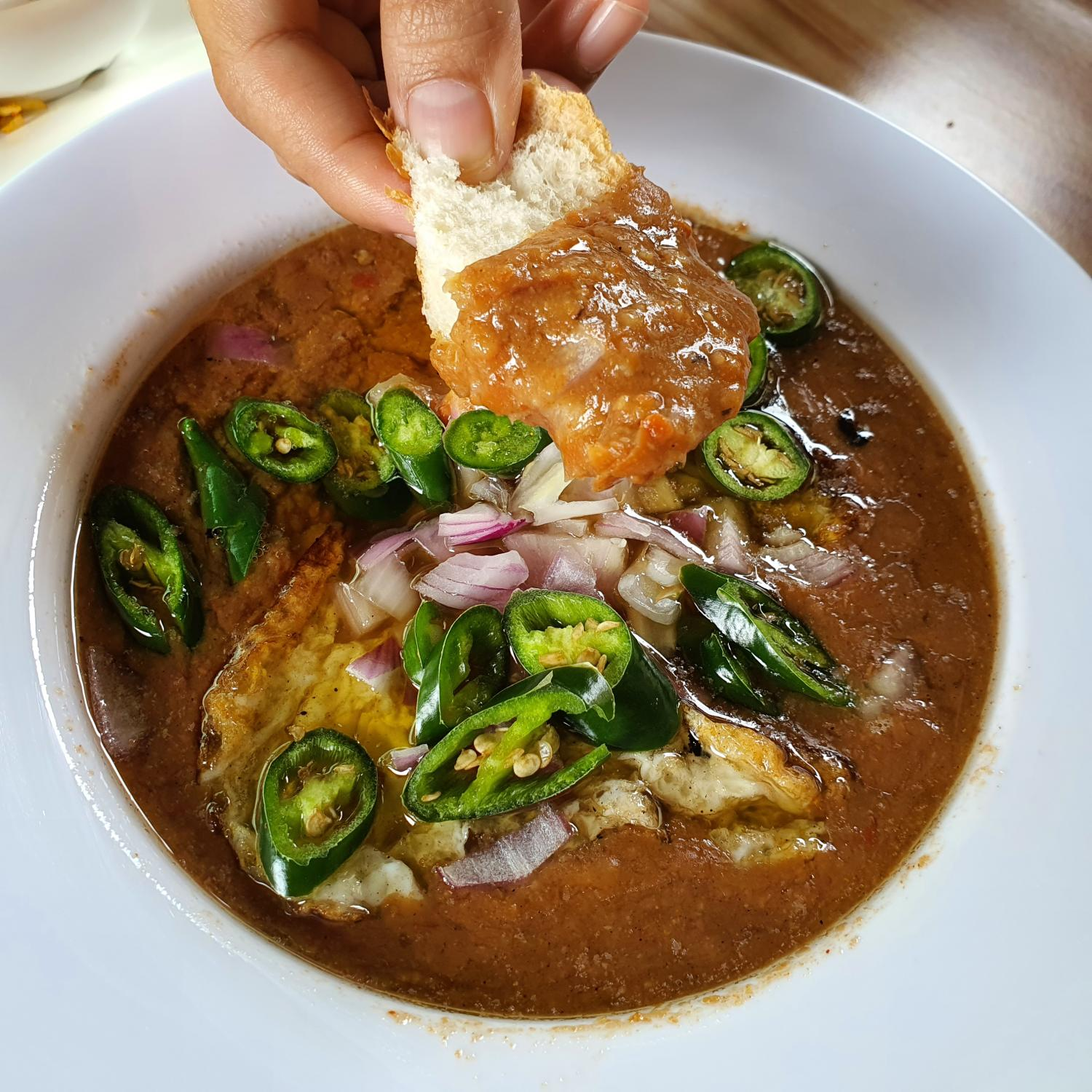
Image credit: Halal Tag
It’s easy to think that this is a localised version of beans on toast, but kacang pool actually has its roots in ful medames, a similar bean dip-esque dish from Egypt. The major difference is that
ours has been developed to suit our taste buds, so you’ll taste spices like cumin, fennel, and curry powder with every scoop of beans.
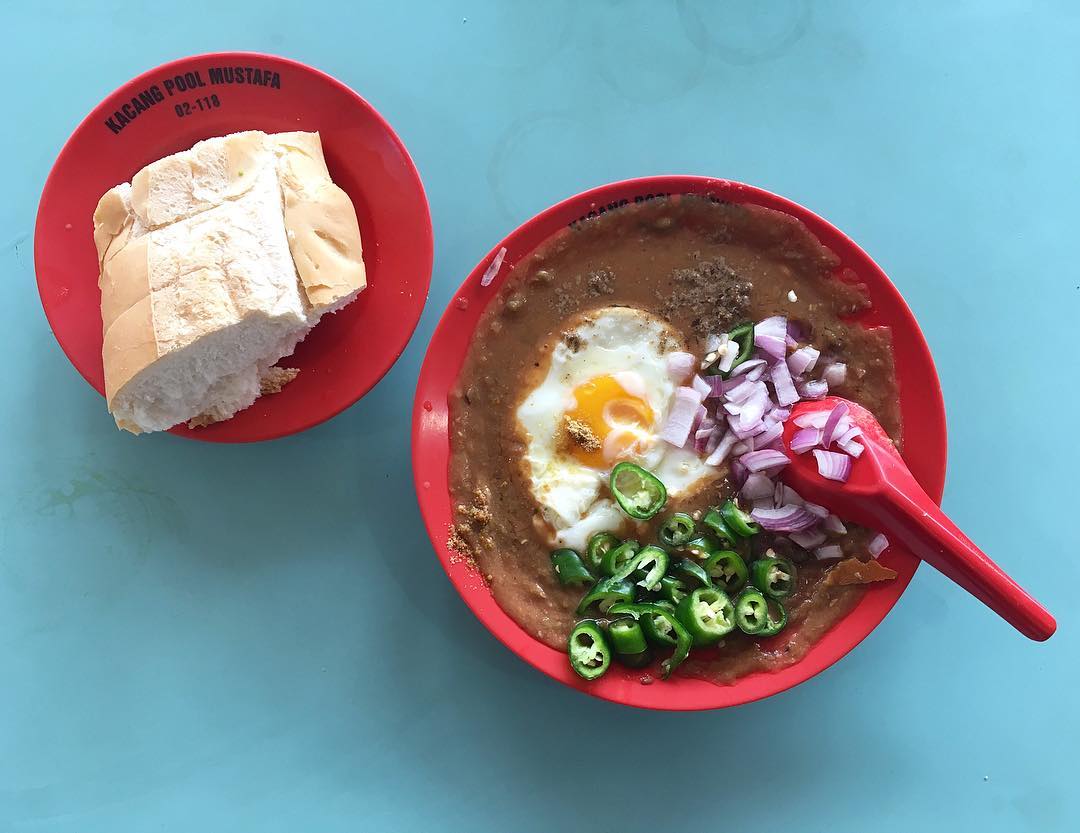
Image credit: @foodieuncle via Instagram
It isn’t the most glamorous dish, which understandably makes it less popular than the more IG-worthy hawker fare we have in Singapore. Nevertheless, kacang pool has its own loyal group of followers who routinely head to Kacang Pool Mustafa for the dish.
The hawkers here have been mashing fava beans since the 1950s, using a family-owned recipe that hasn’t been changed at all. A serving of kacang pool will set you back just $3.50 and you can top up $1 for a sunny side up.
Kacang Pool Mustafa
Address: 1 Geylang Serai, #02-142 Geylang Serai Market and Food Centre, Singapore 402001
Opening hours: 7am-1pm, Daily
3. Lor mee with shark meat
We know, lor mee isn’t considerably rare. You can get the slurpy gravy-heavy noodle dish in most hawker centres, but it’ll take more effort to find one that serves lor mee with shark meat as a topping.
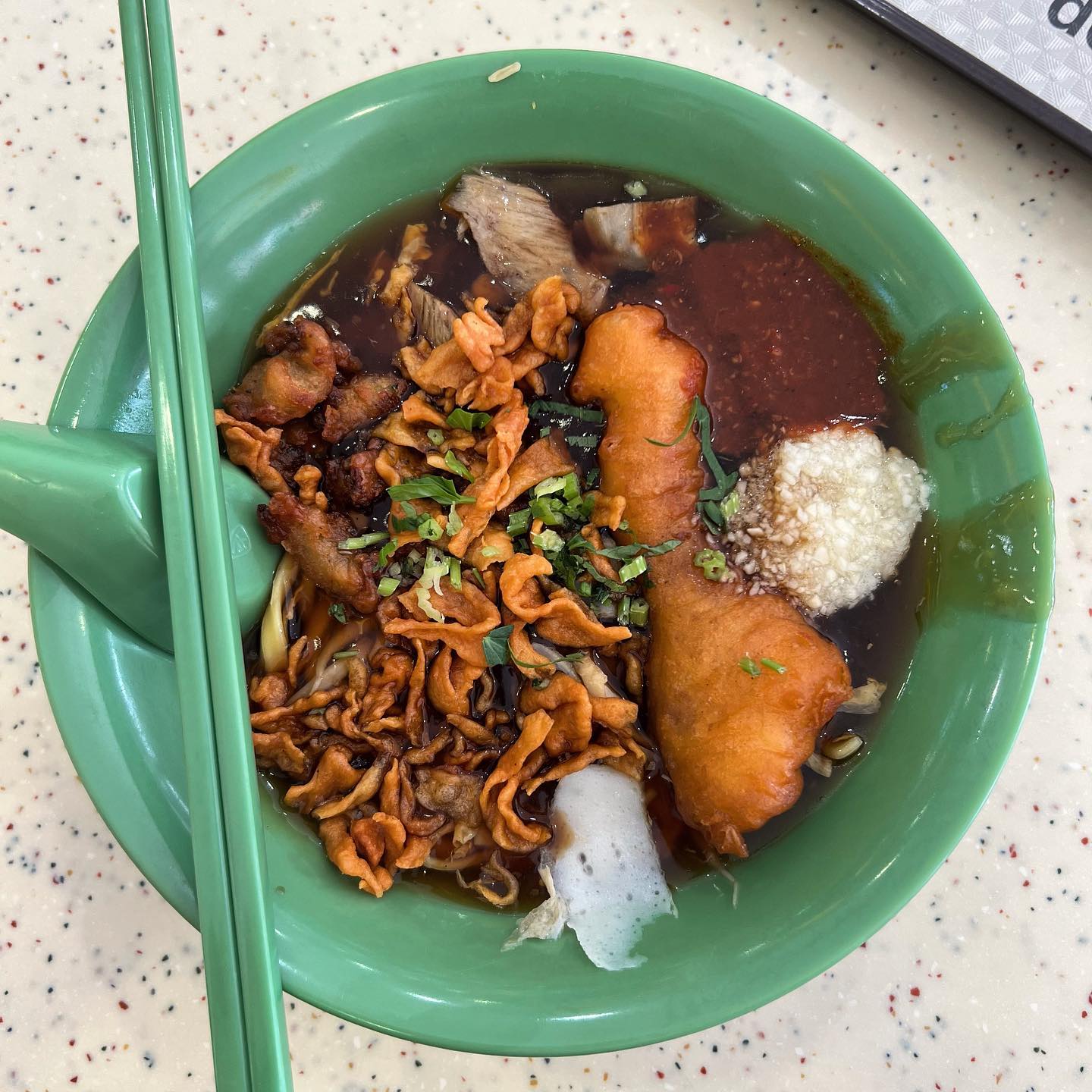
Image credit: @gastronomy.explorer via Instagram
Shark features quite a bit in Chinese cuisine, and not just its fins for shark fin soup. You’d especially be able to find shark in Hokkien and Teochew dishes like in traditional dishes such as pig trotters and shark aspic, and shark meat porridge.
But the use of shark meat has fallen out of favour with younger folk because of the stigma that comes from consuming an endangered animal. Lesser demand also means it’s more expensive to procure, which is why many hawkers have resorted to swapping out shark meat for flakes of red snapper or even cod.
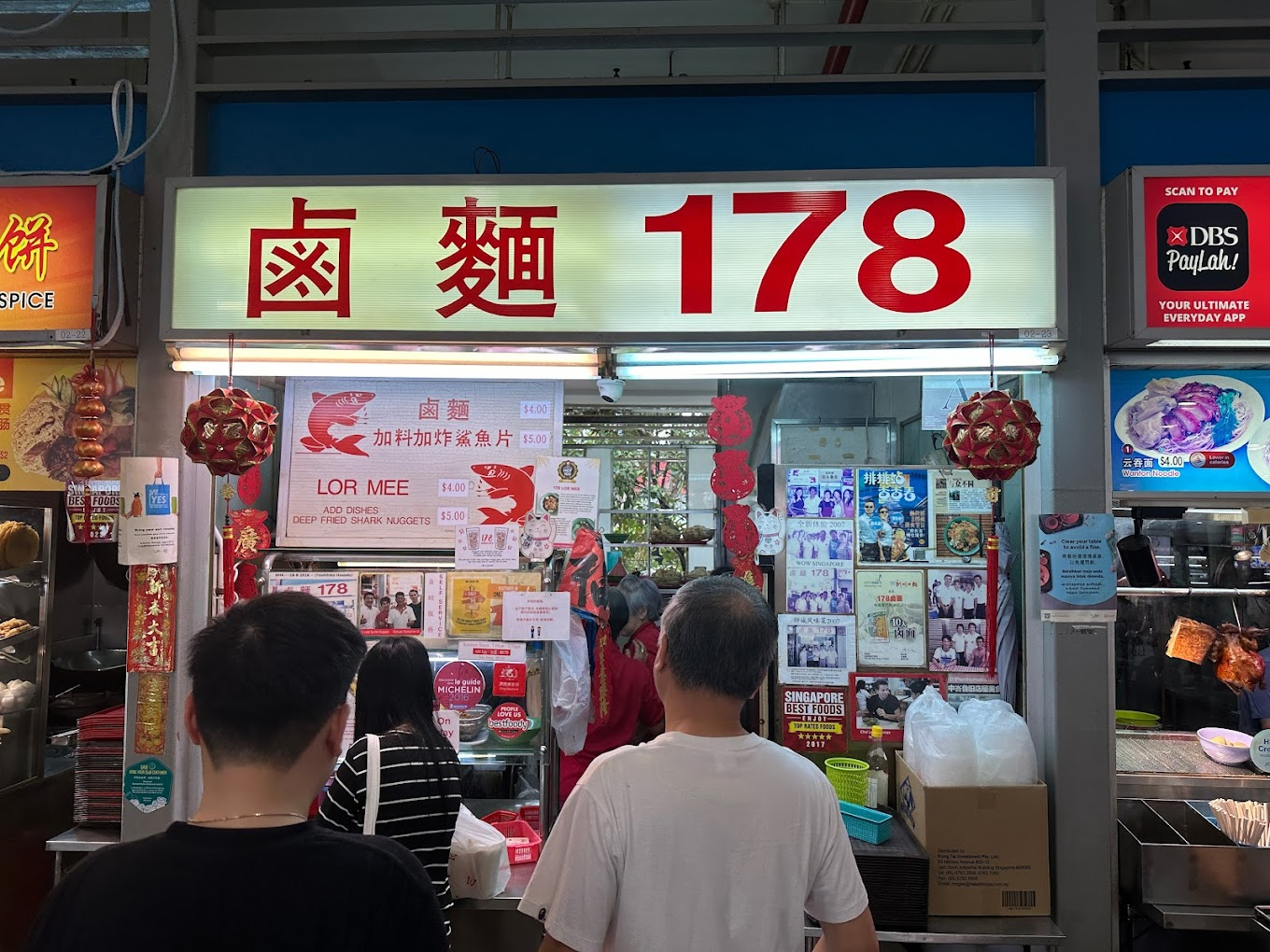
Image credit: David Teo via Google Maps
For a taste of tradition, you can get lor mee with shark meat ($5.50) from Lor Mee 178 at Tiong Bahru Market. The shark meat is battered and deep fried, so it’s more like a crunchy nugget you can enjoy with the noodles. Lor Mee 178 has even been awarded a Michelin Plate – a recognition by the Michelin Guide for F&B outlets that are worth trying.
Lor Mee 178
Address: 30 Seng Poh Road, #02-23 Tiong Bahru Market, Singapore 168898
Opening hours: Thu-Tue 7am-1.45pm (Closed on Wednesdays)
4. Raw fish porridge
Before sushi restaurants were a norm in Singapore, it was the hawker centre that you’d go to if you wanted sashimi. But it wasn’t fatty slices of salmon belly or tuna you’d get. Rather, it was slices of Asian carp, snakehead, and tilapia that you’d find in a dish called raw fish porridge.
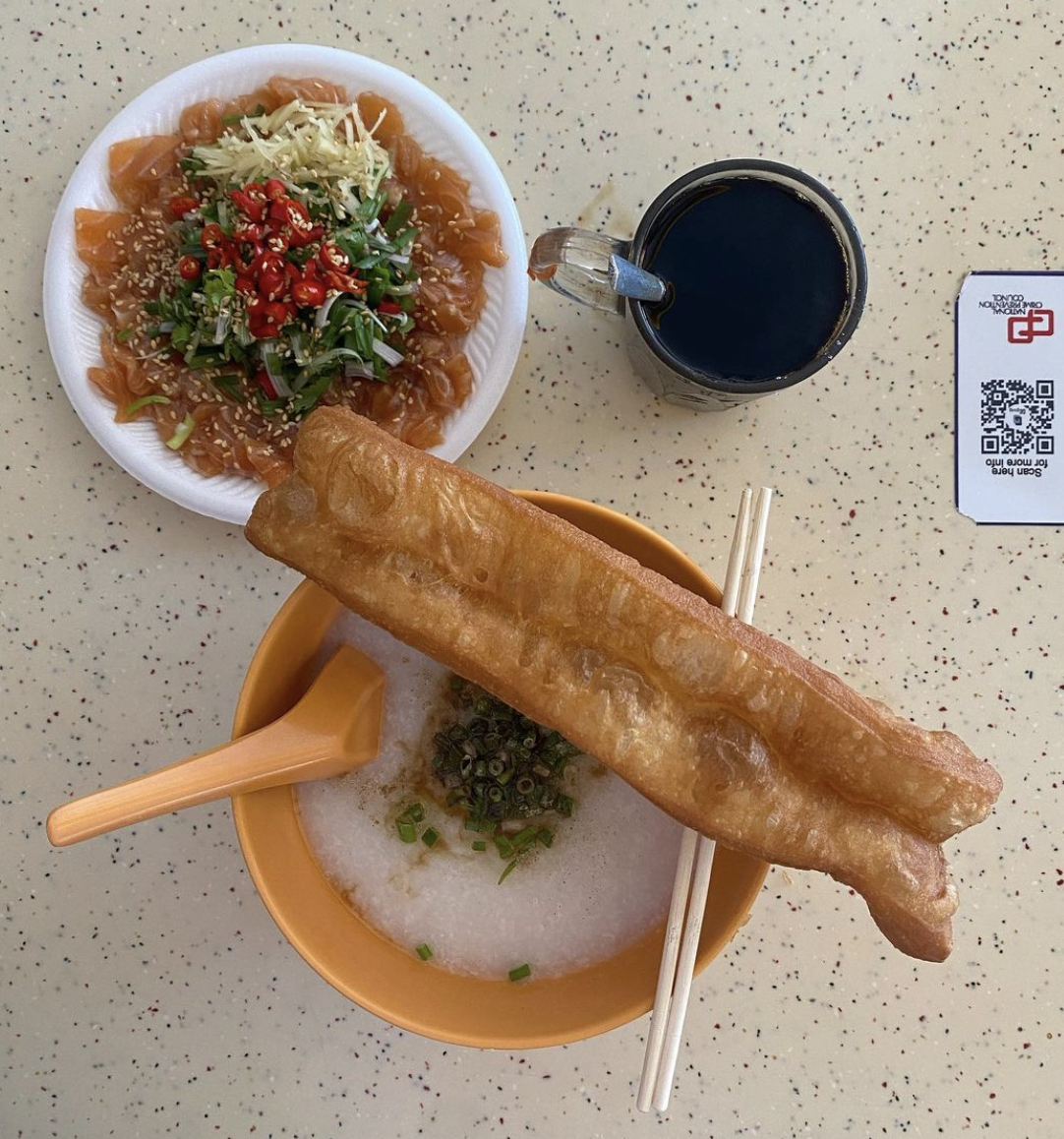
Image adapted from: @wilson_ng_ck via Instagram
Diners were meant to par-cook the raw slices of fish in the steaming porridge, but many would choose to eat them sashimi-style. This, however, led to a spate of food poisoning incidents, one of which landed a man in a coma, and another who had to have all his limbs amputated.
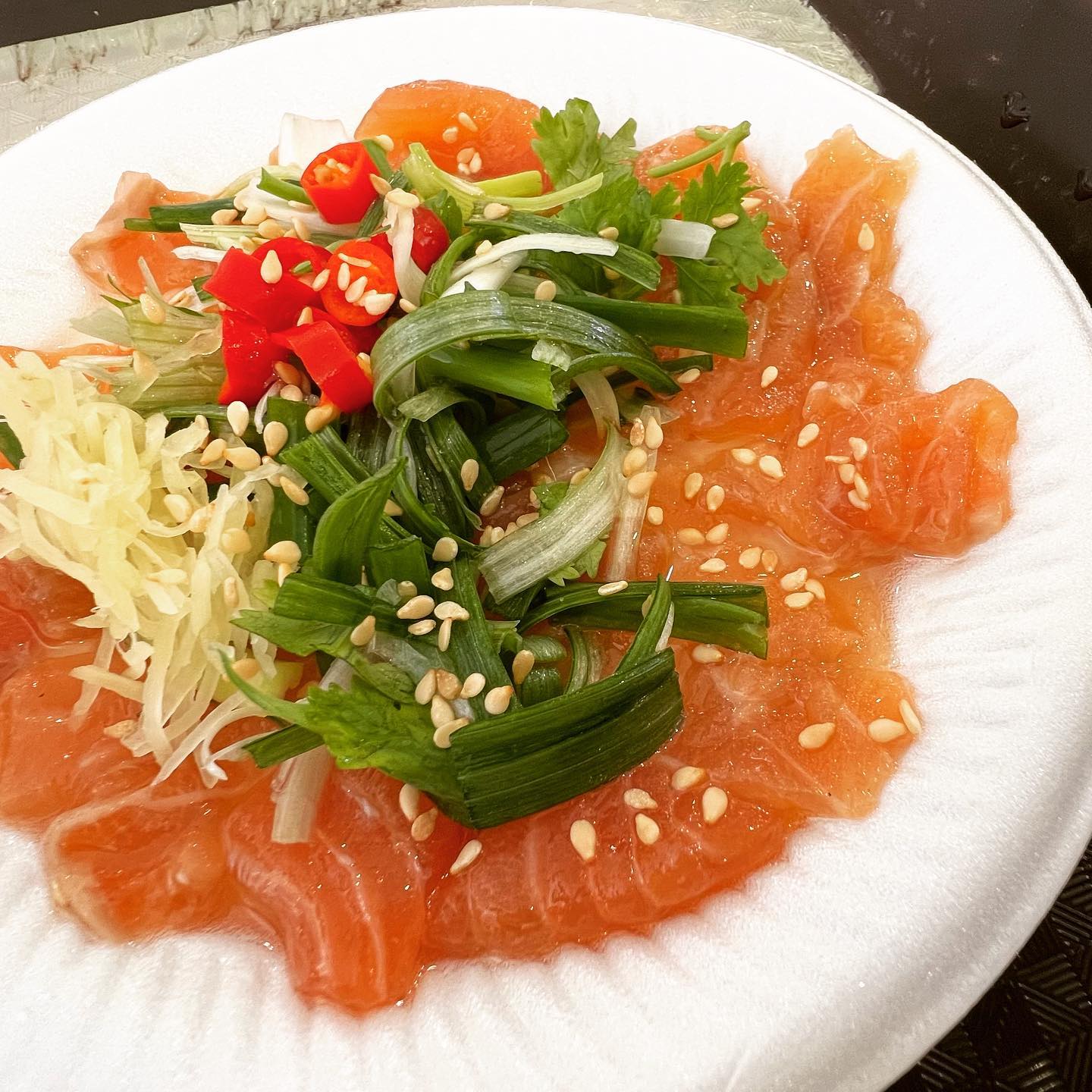
Image credit: @daryllimps via Instagram
It’s no surprise that the government has since banned the sale of raw freshwater fish in hawker centres. Raw fish porridge pretty much became obsolete thereafter. There are a couple of hawkers however, who still serve this dish, but with sashimi-grade salmon and tuna instead. Your chances of getting food poisoning or a Group B Streptococcus infection are much lower with these fish slices.
This nostalgic hawker food is available at 163 Fish & Chicken Porridge at Tiong Bahru Market. The raw slices of salmon are dressed in sesame oil, julienned ginger, scallions, and red chilli. You can get the raw fish on its own for $5 a plate, or in a set with plain porridge for $5.50.
163 Fish & Chicken Porridge
Address: 30 Seng Poh Road, #02-40, Tiong Bahru Market, Singapore 168898
Opening hours: Tue-Wed, Fri-Sun 5.30am-1pm (Closed on Mondays & Thursdays)
5. Abacus seeds
For those of Hakka descent, you probably see abacus seeds frequently on the dining table during festive occasions like Chinese New Year and weddings. It’s a stir-fried dish of yam-paste balls shaped to look like the counting beads of an abacus. Since the Chinese calculator is often used to count money, the dish, also known as suan pan zi, symbolises wealth and prosperity.
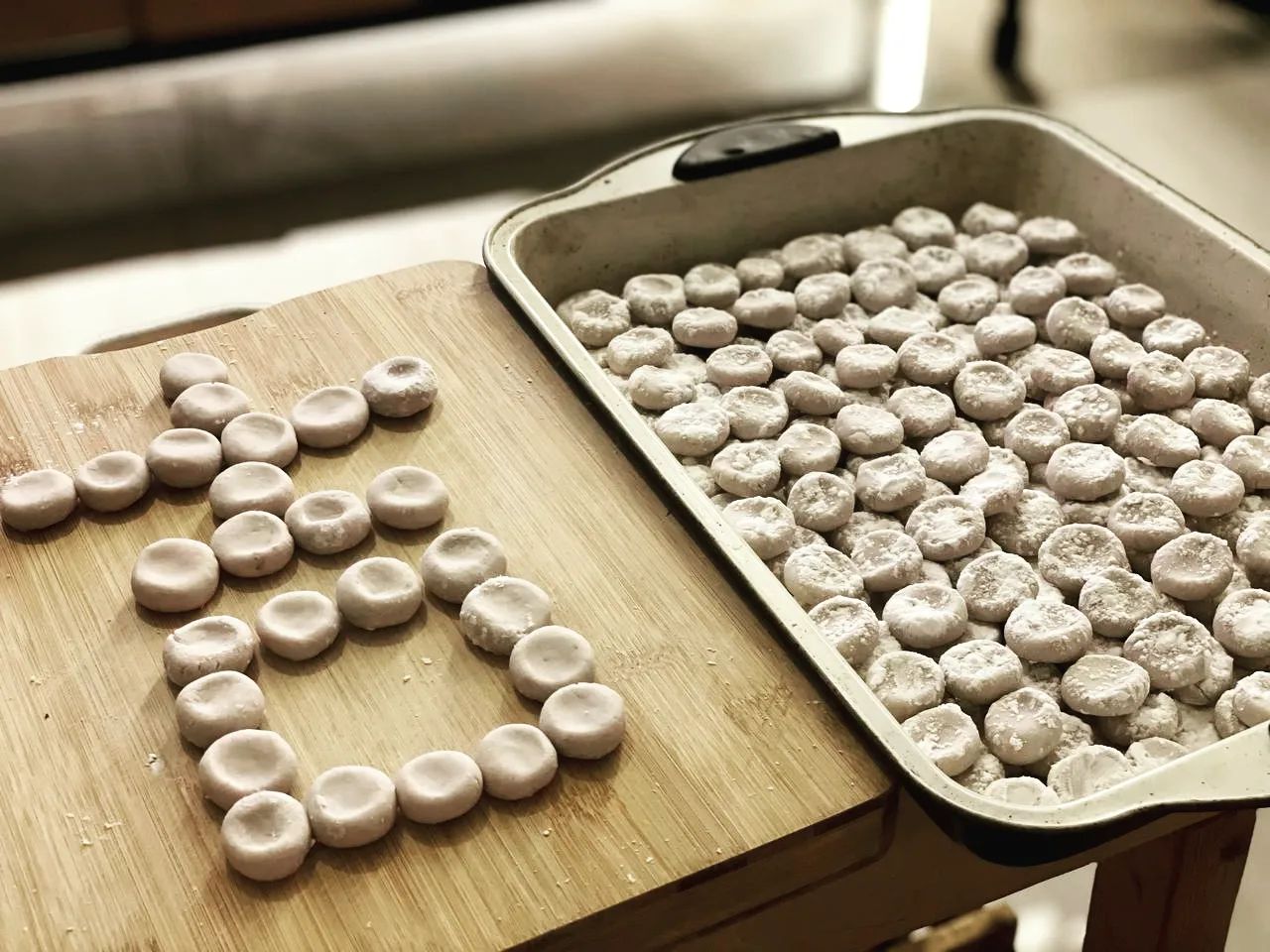
Abacus seeds have to painstakingly be rolled out one by one, then dimpled with the thumb to create its iconic shape.
Image credit: @gab_diveaddict via Instagram
Outside of Hakka homes though, this dish isn’t the easiest to find, even on special occasions. Abacus seeds are tedious to make, requiring steps like boiling and mashing yam with tapioca flour, and shaping the mixture into balls. Then they have to be parboiled before it’s all stir-fried with various aromatics.
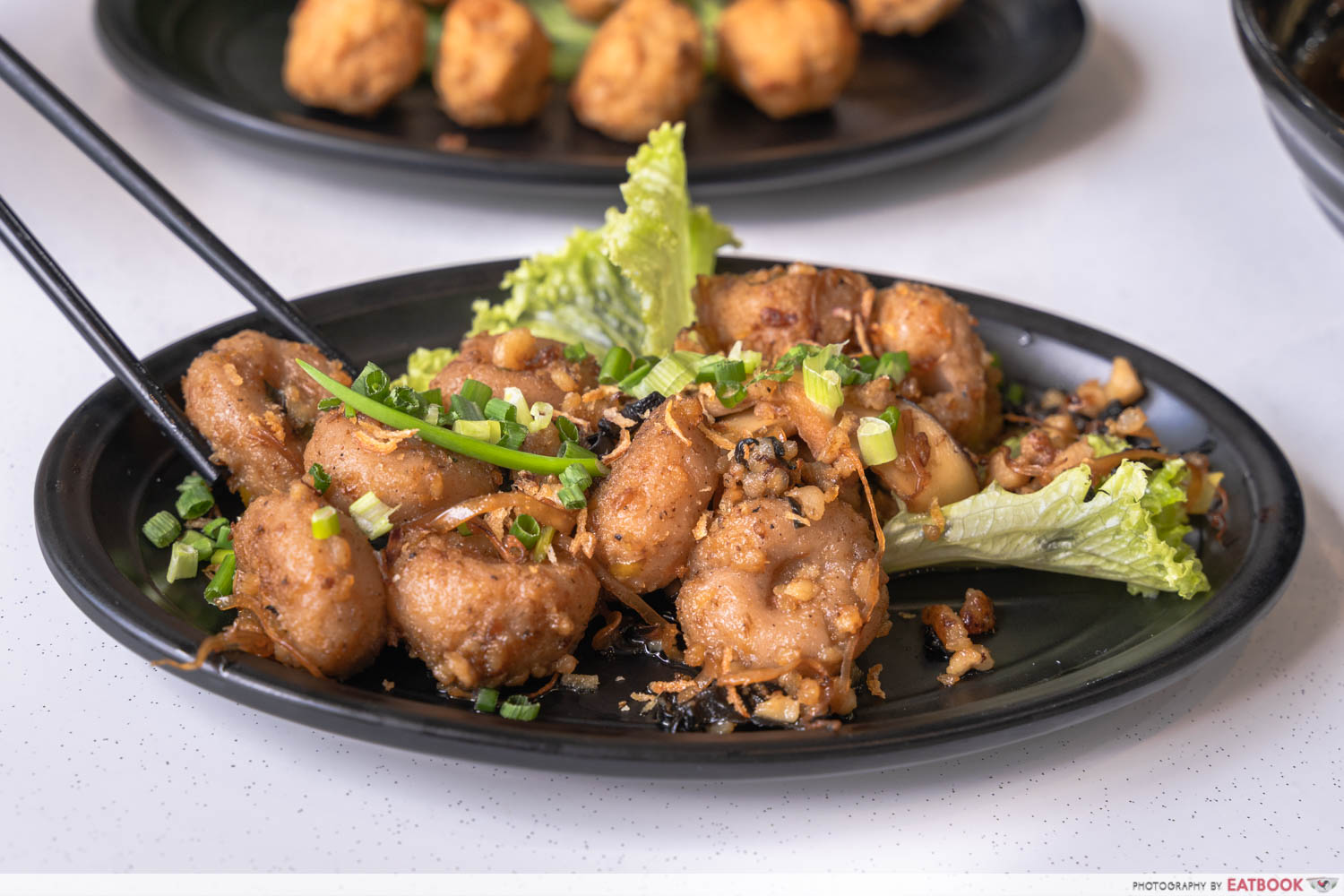
Image credit: Eatbook
It’s rare to find abacus seeds in restaurants, much less hawker stores, so consider Pang’s Hakka Noodles a hidden gem. The stall in Bukit Merah sells traditional Hakka cuisine like its Signature Abacus Seeds ($5.50), Hakka Red Wine Chicken ($5), and Signature Hakka YTF Noodle ($6.30).
Pang’s Hakka Noodles
Address: 2 Jalan Bukit Merah, Singapore 1550002
Opening hours: 8am-8pm, Daily
6. Putu mayam
One look at putu mayam, also known as string hoppers, and we wouldn’t blame you if you thought it was just rice vermicelli served with a dusting of orange jaggery sugar.
While the dish is made of rice flour, it must be toasted with pandan leaves then made into a dough ball that is then pressed through a sieve to create the signature long strands of the dish. The final step involves steaming the strands of putu mayam before it’s served.
The time-consuming process is why putu mayam has fallen out of favour with many Tamil hawkers, who would rather serve popular staples like roti prata and thosai, which are much easier to make.

Image credit: Daniel Wong via Google Maps
That hasn’t stopped Heavens, a hawker at Ghim Moh Hawker Centre from selling their homemade putu mayam at $2.80 a plate. Traditionally, putu mayam can be served sweet or savoury with gula melaka and coconut or curry, but Heavens serves theirs simply with grated coconut and jaggery sugar.
Heavens
Address: 20 Ghim Moh Road, #01-26 Ghim Moh Hawker Centre, Singapore 270020
Opening hours: Tue-Sun 6am-1pm (Closed on Mondays)
7. Roti jala
Roti jala looks similar to putu mayam, but the 2 couldn’t be more different. Roti kirai, as it’s also called, is made with coconut milk and flour, with just a touch of turmeric to give the lattice pancakes their iconic yellow colour. And compared to putu mayam, roti jala takes significantly less time to prepare.
Its pain point for hawkers though, is that the pancakes need to be made a la minute for them to retain their slightly chewy texture. It’s why you’ll often see roti jala only served in many Malay and Indian-Muslim households, but rarely at hawker centres. You might see them sold during special occasions like Hari Raya at Ramadan bazaars.
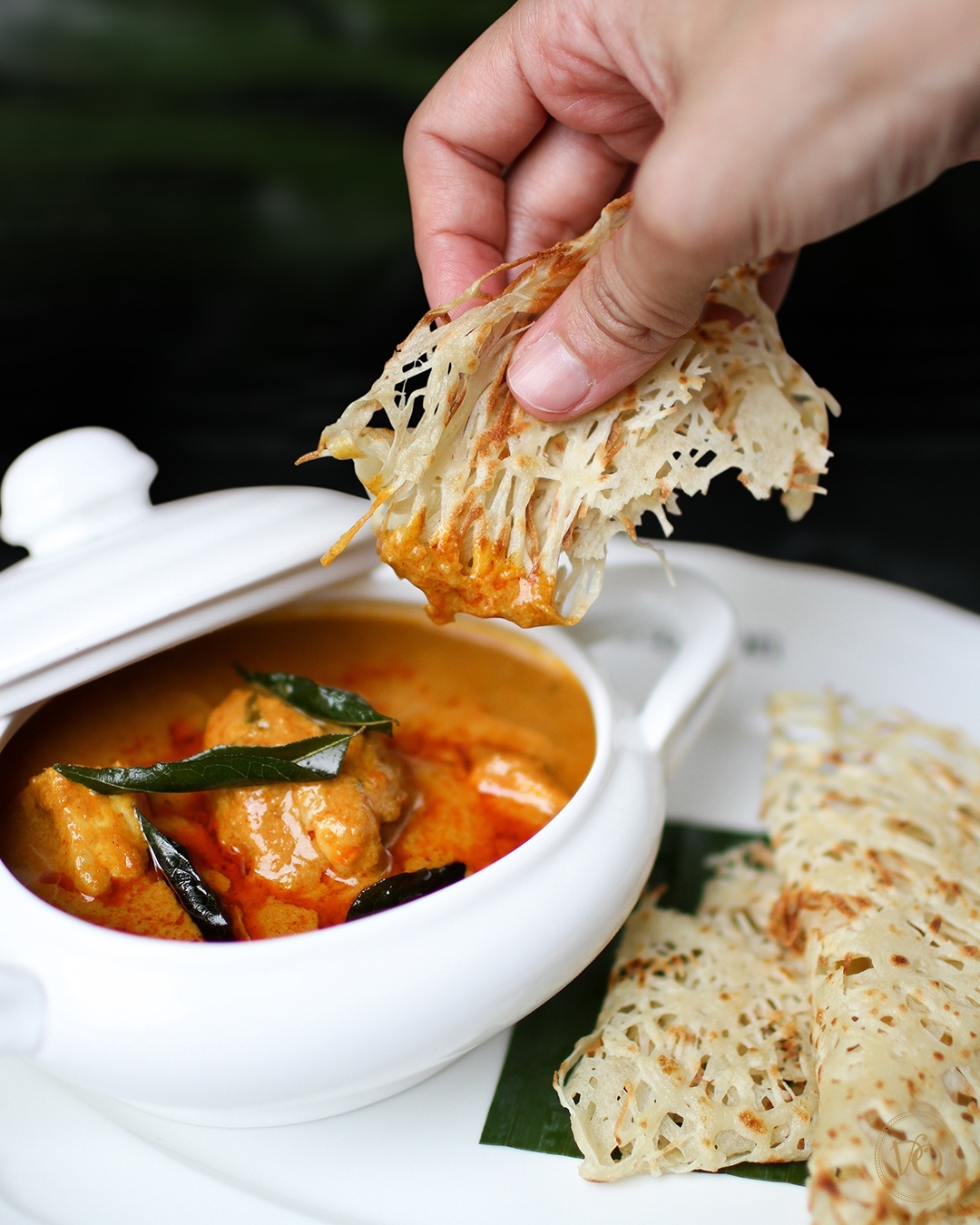
Image credit: @violetoonsingapore via Instagram
If you don’t want to have to wait to get your hands on this dish, 12 Goreng Pisang King in Bedok sells a hefty plate of roti jala ($4) that comes with a generous side of chicken curry. While they’re known for their goreng pisang, the roti jala does sell out quickly, so come early in the morning if you want a bite.
12 Goreng Pisang King
Address: 1 Bedok Road, Stall 12, Bedok Food Centre Singapore 469572
Opening hours: 11am-6pm, Daily
8. Wah kueh
If you count yourself a foodie, you’d already know and love chwee kueh, a snack food of steamed rice cakes topped with preserved radish and chilli. But here’s its lesser-known cousin, wah kueh. The base is the same – a steamed rice cake, but much bigger, and usually filled with ingredients like chopped shiitake mushrooms, dried shrimp, and bits of pork.
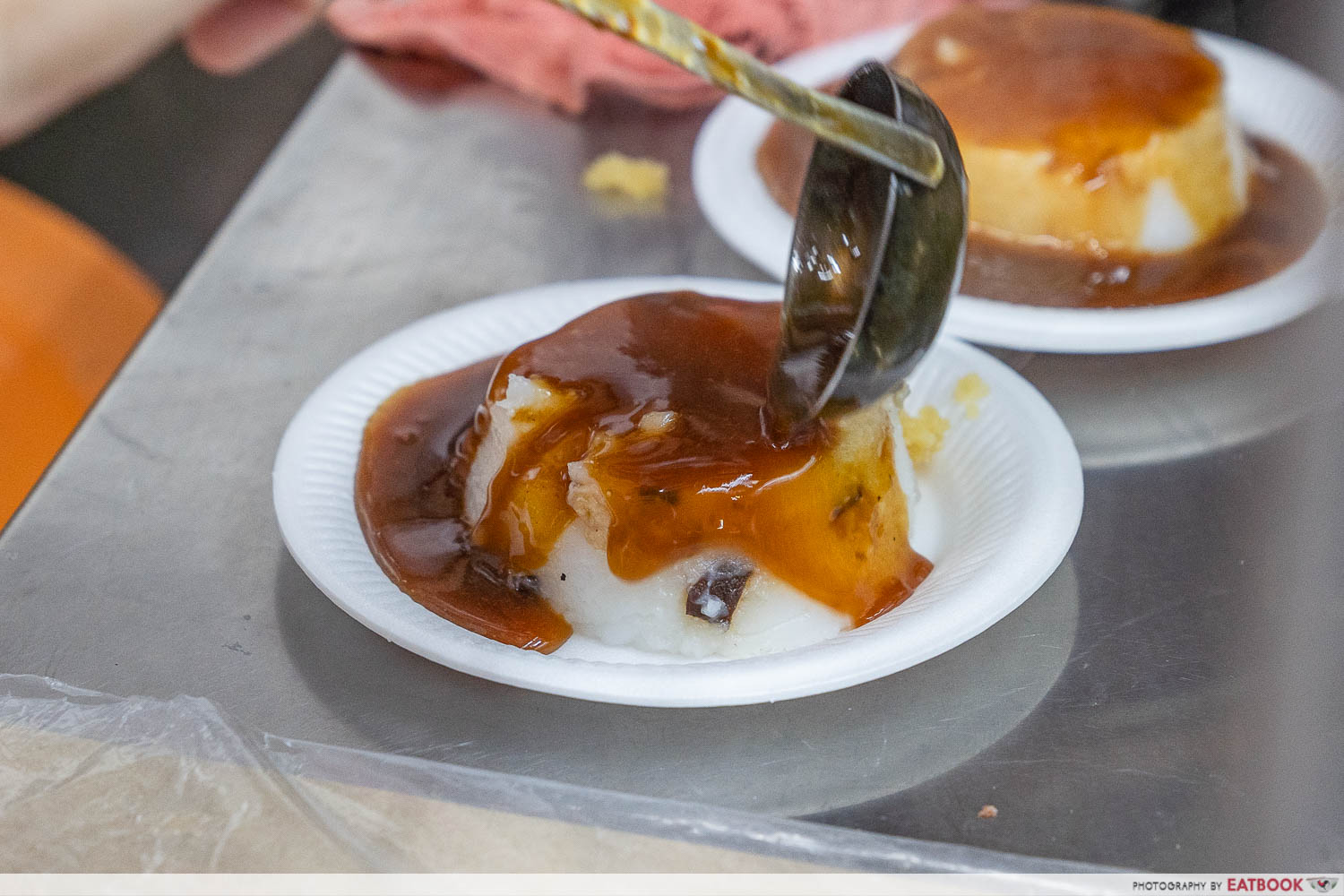
Image credit: Eatbook
But that’s not all that adds to the taste of wah kueh. The traditional Hokkien cake is smothered in a slightly sweet oyster and soy sauce gravy and served with a heaping spoon of raw garlic paste and sambal chilli. It makes for a garlicky, spicy, and savoury dish best enjoyed alone; this is not a snack you’d want to eat on a first date.
Wah kueh was fairly common among street hawkers in the 1960s, even though making it was time consuming. But as the cost of ingredients went up, few hawkers could justify charging a couple of dollars for the dish. Wah kueh has since virtually disappeared from hawkers and even Hokkien families.
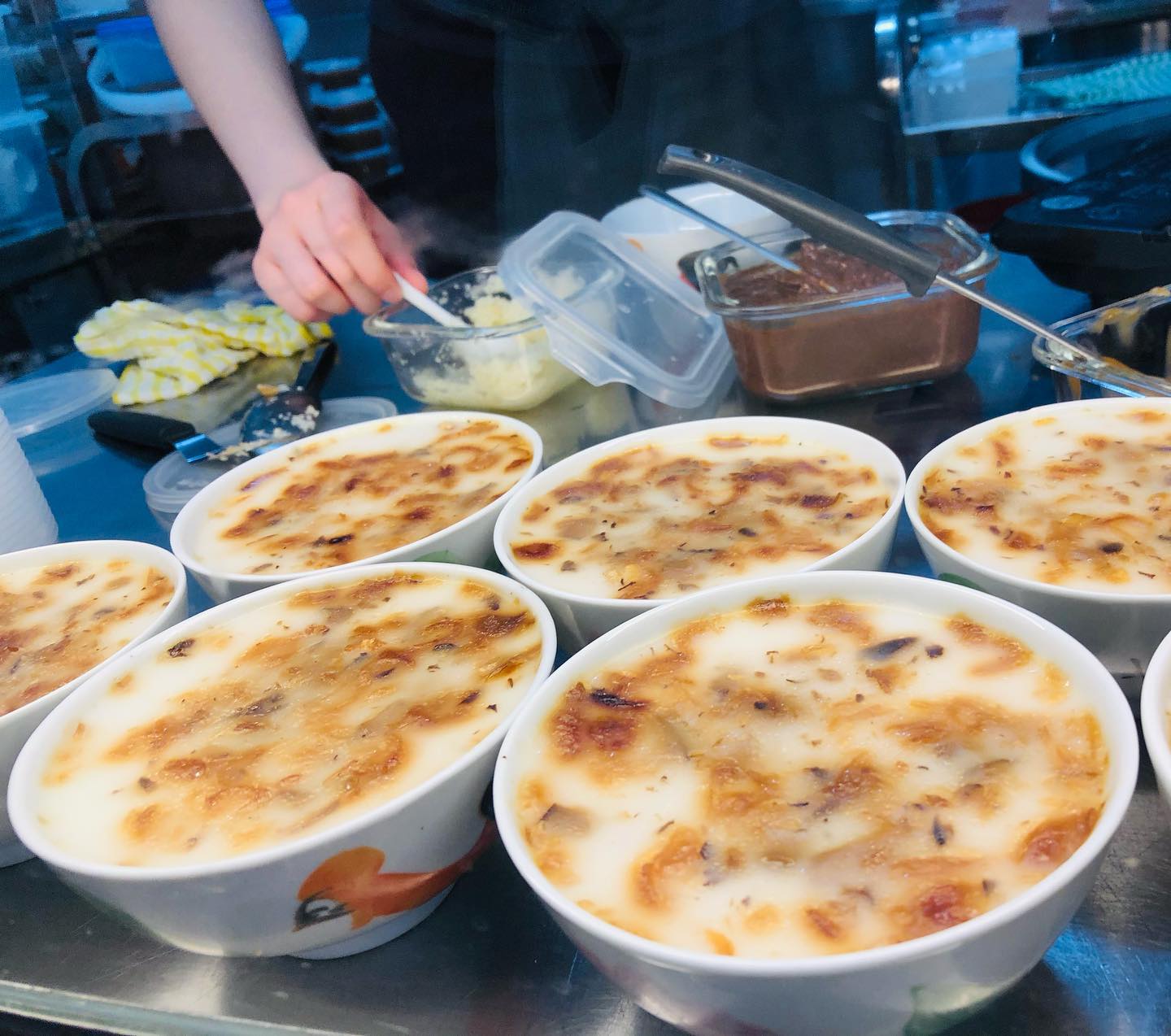
Image credit: @jamietan04 via Instagram
You can, however, still get wah kueh ($2.80) from Ah Kong Wah Kuih, a hawker in Chinatown that specialises in just that. It’s the only thing they sell here, but best believe there are long queues from the minute they open. In fact, the stall doens’t have an official closing time, as it varies daily, depending on how quickly they sell out.
Ah Kong Wah Kuih
Address: 355 Smith Street, #02-116 Chinatown Complex Food Centre, Singapore 050335
Opening hours: Tue-Sun 7.45am till sold out (Closed on Mondays)
9. Tau kwa pau
The history of tau kwa pau is quite well-documented. It’s said that a hawker, Khoo Buck Teck, invented the dish in the 1950s, although he claims he learnt the recipe from a Peranakan woman.
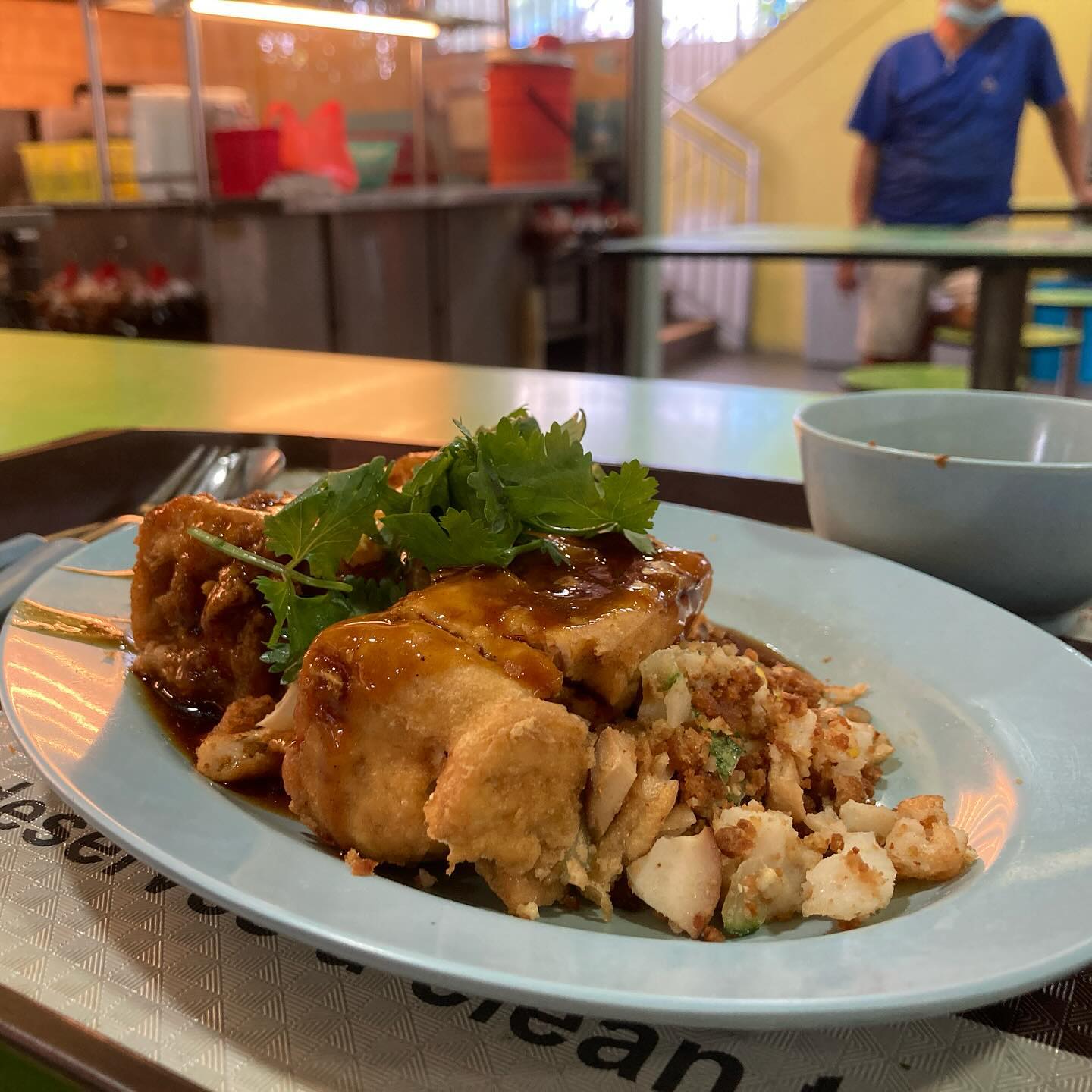
Image credit: @tast.ly via Instagram
Regardless of whether that recipe was learned or conjured up by Mr Khoo, tau kwa pau soon became a staple feature at his duck rice stall. It appealed to Peranakan gamblers living in Katong, as the dish looks like an overflowing money purse – a symbol of luck and prosperity.
And when we say overflowing, we do mean overflowing. You’ll find diced fishcakes, cucumbers, braised hard-boiled eggs, crispy bits of yam, chicken offal, and sometimes even braised pork belly. This is all stuffed into a deep-fried beancurd pocket, with extra filling spilling over the sides. The tau kwa pau is then covered in that same herbal-rich braised duck gravy you’d get from the duck rice stall.
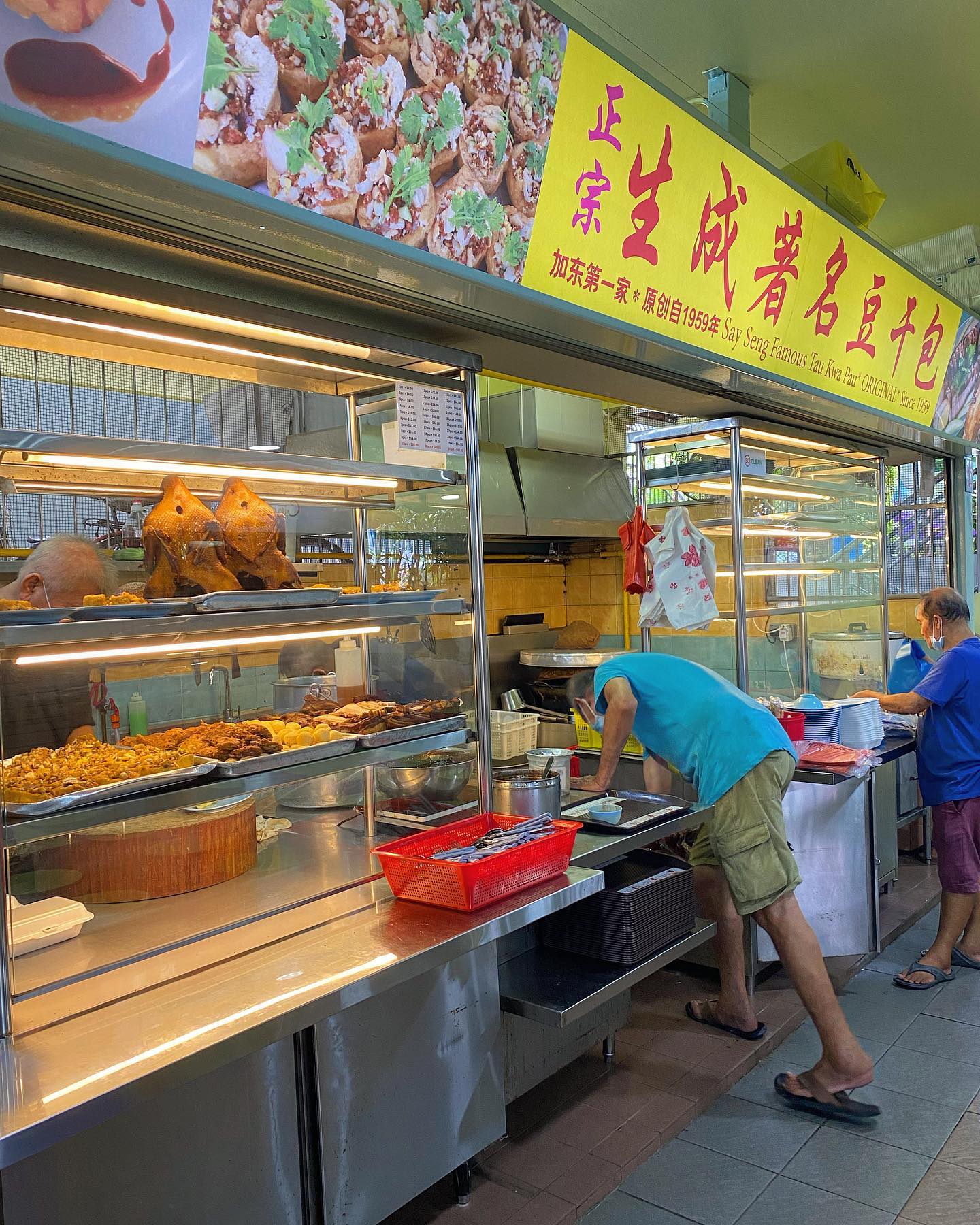
Image credit: @jaceonthemove via Instagram
As with many rare hawker food in Singapore, cost and time are what has caused the disappearance of tau kwa pau from hawker centres. Only the OG by Mr Khoo remains – Say Seng Tau Kwa Pau – which is now run by his son.
The recipe has changed slightly over the years, according to loyal patrons, but they still return for the tau kwa pau ($5.50 for 2) for the mix of textures you can find in each bite.
Say Seng Tau Kwa Pau
Address: 271 Onan Road, Dunman Centre, Singapore 424768
Opening hours: Tue-Sat 7.30am-4pm (Closed on Mondays)
10. Sup tulang merah
Chances are, you’ve probably heard of sup tulang merah or at least seen in once or twice in a hawker centre. The mutton bone dish smothered in a bright red gravy is hard to miss. But few know the joys of using your hands to slurp up the tender mutton meat off the bone and dipping slices of bread into its sweet sauce.

Image credit: Swanila.com
Then comes the most important part – sucking up the soft bone marrow. It is where the dish gets its name. Sup tulang merah translates to red marrow soup, even though it’s more like a stew than a soup you’d want to drink.
If you thought sup tulang merah has any relations to sup kambing (mutton soup) then you’d be right. It’s said that the inventor of the dish, Abdul Kadir, sold mee kuah, a noodle dish that uses sup kambing. A regular customer then asked if he could cook the bone marrow for him, which developed into the sup tulang merah we’ve come to know today.
There is another family that also lays claim to the invention of sup tulang merah – Baharudeen, who cooked mutton bones with chillis and tomatoes to make a snack for himself after doing prep for the mee kuah he was selling as well. Passers-by couldn’t resist the enticing smell of the bone marrows simmering in gravy and asked for helpings of the dish that became known as sup tulang merah.
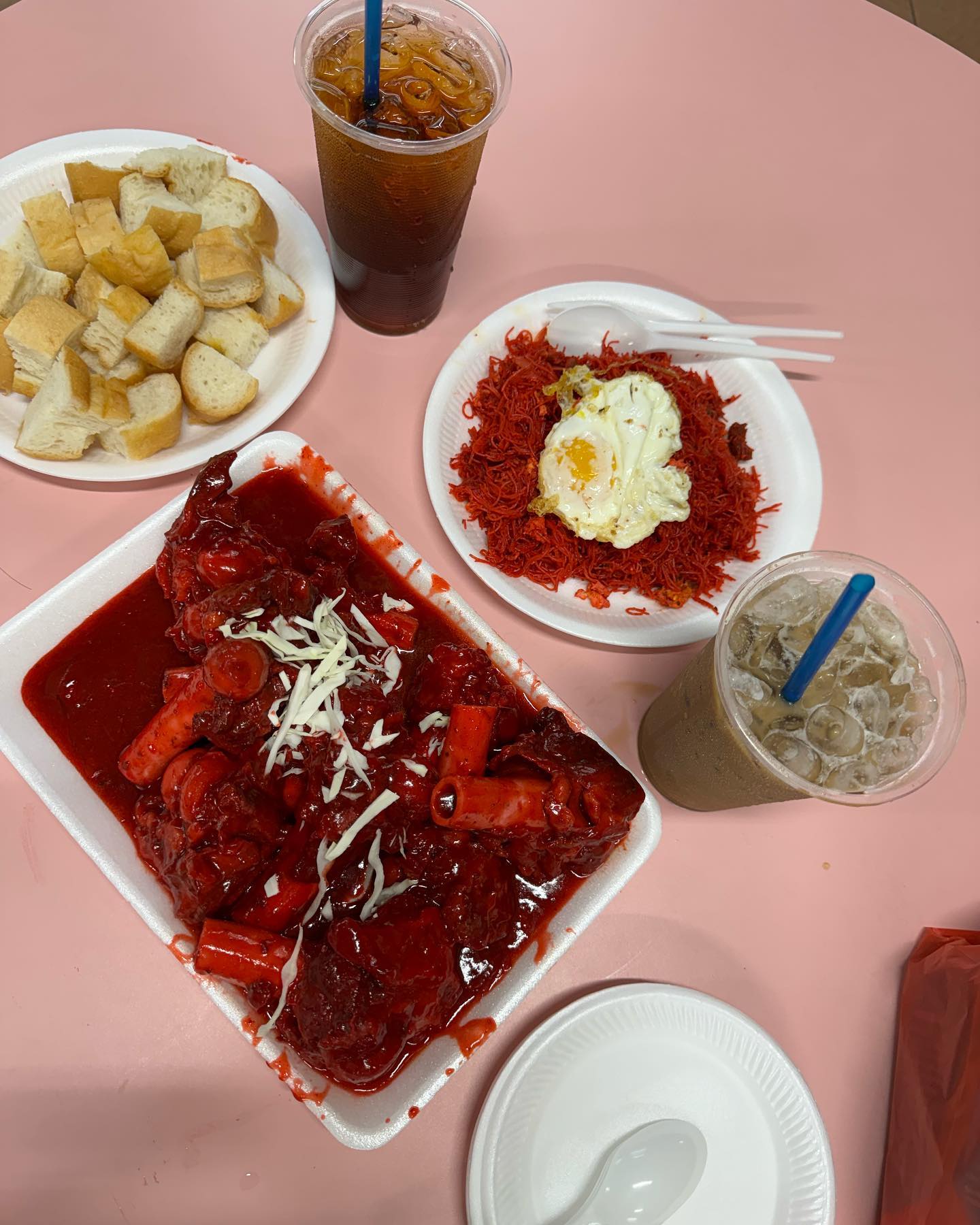
Image credit: @girlmakan via Instagram
Regardless of who actually came up with this dish, it’s safe to say that it’s remained popular with those who’ve had the chance to try it. Haji Kadir Food Chains at Golden Mile Food Centre is run by Mr Kadir’s son and has also been featured in Anthony Bourdain’s No Reservations.
The sup tulang merah ($15 for 6 pieces) is served with slices of French loaf. Don’t expect to get cutlery, but you can request for gloves so your hands aren’t dripping in sauce when you’re done. You’ll also be given a straw to help suck up all that bone marrow.
Haji Kadir Food Chains
Address: 505 Beach Road, # B1-13/14 Golden Mile Food Centre, Singapore 199583
Opening hours: 11.30am-11pm, Daily
Where to find nostalgic hawker food in Singapore
Send this list over to your parents to see if they remember eating any of these hawker dishes back in the day. And if you’ve never tried any of these, then do yourself a favour to make a trip to these disappearing hawkers. Who knows, we may not have very much time left to try these nostalgic hawker food in Singapore.
Read up on more nostalgia in Singapore:
- Nostalgic memories of school
- Hangout places in Singapore from the ’90s and ’00s
- Old-school snacks we grew up with
Cover image adapted from: Dewakan via Facebook, @tast.ly via Instagram
Last updated 7th August 2024.
